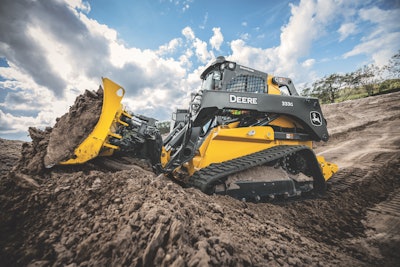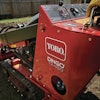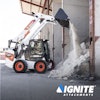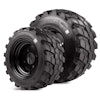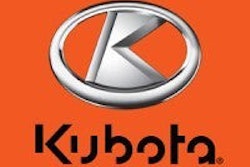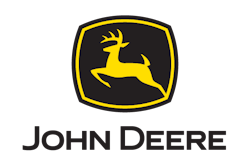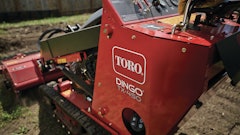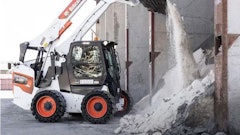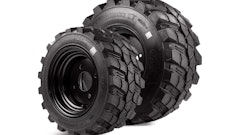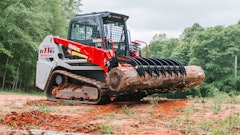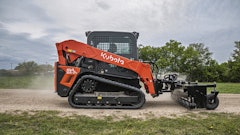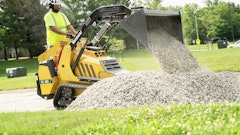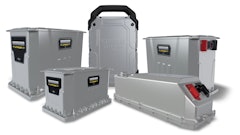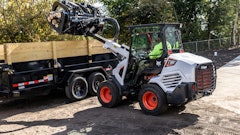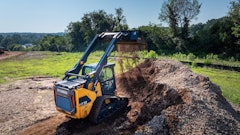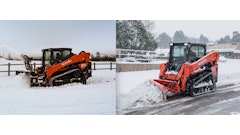Few things in life are constant—except change, that is. That concept also applies to the range of compact track loader (CTL) features that rental companies should have in their fleet for their construction customers.
“Contractors’ jobs are constantly changing, which means their machine needs are also altering with each new and unique job,” says Luke Gribble, solutions marketing manager, John Deere.
Gribble, Julie Portillo, marketing manager for loaders, Bobcat Co., and Jerry Corder, product manager, construction equipment, Kubota, describe the features rental companies should have at the ready within their compact track loader fleets.
Not One Size Fits All
Before adjusting their rental fleet, rental companies should first consider the jobsites and applications of their local rental customers. When it comes to deciding what size machine to stock, experts agree that a little bit of everything is best.
“A variety of compact track loader sizes will continue to be in demand because they are versatile, tool-carrying, multipurpose machines,” Portillo says. “The increased floatation provided by their track systems makes them ideal on a wide range of jobsites with soft ground surfaces such as sand, mud and clay. Also, CTLs can travel across uneven ground more efficiently.”
Perhaps the most common size class of machine in rental fleets consists of small and midframe machines due to their reliability and low owning and operating costs, Gribble says.
Portillo agrees.
“The industry seems to be focused on maximizing what tasks compact equipment can do,” Portillo says. “We encourage rental houses to consider adding compact track loaders to their fleet that maximize performance within a relatively compact chassis size. Given that these units will likely be used for short-term projects, machines that are easy to transport and maneuver make for great worksite partners for most renters.”
Corder adds that rental centers should include in their fleet a narrow, lightweight machine (around 4,000 pounds) to assist contractors with work between housing sites.
However, rental companies should not stop at the small to midframe size because the last several years have seen an increase in demand for large-frame machines due to the high levels of productivity they bring to the table, Gribble says.
“The best applications for contractors who are running a large CTL would be medium to large site development or truck and trailer loading because the larger CTLs have the capability to move more materials on these types of sites, allowing customers to be as productive as possible while they are renting the machine,” Gribble says. “The large CTLs are also often best used for grading applications, whether it’s with an integrated or aftermarket system.”
Portillo agrees, noting that ultimately, boosted horsepower means greater lifting capabilities, breakout forces and maneuverability for fast cycle times.
Corder adds that the best applications for higher-horsepower CTLs include land management mulching applications and for running cold planers, but he cautions that rental companies should avoid putting all of their dollars into only the larger CTL bucket.
“Demand has grown due to the high-horsepower machine versatility and stability, but due to the cost, it would be a low-volume market for rental centers,” Corder says.
Stay Attached
In addition to the machines themselves, rental companies should always have a variety of attachments on hand to help suit all of the needs of their customers.
“The addition of an attachment adds versatility to your machine and increases efficiency on the job,” Gribble says. “We have found that contractors also rent attachments to help fill the need for equipment that they do not currently have on-site.”
Portillo says that having a robust attachment selection available to renters can help rental companies attain more business in the long run.
“The more attachment options you have, the more attractive and valuable your compact track loaders will be to renters,” Portillo says.
What to Know
While the list of extended features seems to grow longer and longer, Portillo says rental companies’ best bet is to go with a simpler machine.
“While a seasoned operator will benefit from using a feature-rich compact track loader, rental companies won’t necessarily know how proficient an individual will be with a loader,” Portillo says. “Units that are simple to maintain, operate and own are best for a rental house’s bottom line.”
Corder agrees.
“Most rental companies desire the most “vanilla” machine possible,” Corder says. “With ROI being the main consideration, the less expensive the machine, the better.”
Additional Features
- Safety features: A backup camera enables the operator to know what is behind them, and how close those objects are, whether that’s vehicles, buildings or pedestrians.
- Visibility: Larger front, rear and side windows boost visibility to the sides and tracks and improve the view when loading a truck or using attachments. Some loaders also offer an optional closure to maximize visibility by reducing steel mesh screens from the side windows.
- Durability: Look for machines that are built to last and that will stand up to the tough applications of renters.
- Comfort: Choose a machine that includes operator-centric features such as ergonomic controls and a comfortable seat.
- Pressurized interior: Look for cab door and window seals that help keep out dust and debris, to keep end users clean, comfortable and more productive.
- Bigger entry/exit: Large cab openings and lower door thresholds provide easier entry and exit to accommodate a variety of renters.
- Climate control: Find machines with accessible air conditioning and heat controls, easy open/close side windows for controlling air flow and a rear defrost to keep windows clear.
- Telematics: Telematics systems give the rental center information on the location of the unit, how much and when it is operated and its maintenance needs.
